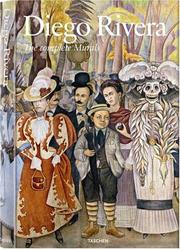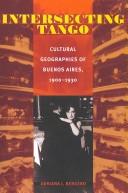| Listing 1 - 10 of 21 | << page >> |
Sort by
|
Book
ISBN: 8483590581 1441666664 9781441666666 8483590182 9788483590188 Year: 2008 Publisher: Madrid Calambur
Abstract | Keywords | Export | Availability | Bookmark
 Loading...
Loading...Choose an application
- Reference Manager
- EndNote
- RefWorks (Direct export to RefWorks)

ISBN: 9783822849439 Year: 2008 Publisher: Köln Taschen
Abstract | Keywords | Export | Availability | Bookmark
 Loading...
Loading...Choose an application
- Reference Manager
- EndNote
- RefWorks (Direct export to RefWorks)
Book
ISBN: 9788498462302 8498462304 Year: 2008 Publisher: Barcelona: Claret,
Abstract | Keywords | Export | Availability | Bookmark
 Loading...
Loading...Choose an application
- Reference Manager
- EndNote
- RefWorks (Direct export to RefWorks)
Une bande dessinée qui rapproche de Saint Antonio María Claret on peut suivre sa vie aventureuse, de la Catalogne aux îles Canaries, de Cuba et de la cour de Madrid, à son exil en France.
Book
ISBN: 1282621238 9786612621239 1846156734 Year: 2008 Publisher: Woodbridge, Suffolk, UK : Tamesis,
Abstract | Keywords | Export | Availability | Bookmark
 Loading...
Loading...Choose an application
- Reference Manager
- EndNote
- RefWorks (Direct export to RefWorks)
The sanctification of stardom Contemporary icons are drawn from popular culture - musicians, artists, actors, and other personalities we hear on radio or see on television, on screen, in print and in cyberspace. Today's 'gods' are media personalities, and cults surround stars and artists like Frida Kahlo, Carlos Gardel, Eva Per©đn, and Selena. Because of transnational and global trends in importing and exporting cultural products, the paintings, music, and politics that these figures crafted accrue symbolic meaning in multiple formats. By viewing them through the lens of performance art we can begin to see how their polyvalent personas were first molded and perfected for the public through paintings, tangos, politics, and Tejano music. Once they fashioned their own complex images, these multi-layered icons continued to travel after death over international boundaries, gendered divisions, political borders, and language barriers. Their reincarnation on stage has allowed dramatists to affix and generate new associations, thus converting them into secular saints for contemporary audiences. SARAH M. MISEMER lectures in Hispanic Studies at TexasA&M University, College Station.
Spanish American drama --- History and criticism. --- Kahlo, Frida --- Gardel, Carlos, --- Perón, Eva, --- Selena, --- In literature. --- Gardes, Charles Romuald, --- Gardés, Carlos Romualdo, --- Gardel, Carlitos, --- Kahlo de Rivera, Frida --- Rivera, Frida Kahlo de --- De Rivera, Frida Kahlo --- Khalo, Frida --- Kahlo y Calderón, Magdalena Carmen Frida --- Calderón, Magdalena Carmen Frida Kahlo y --- Calderón, Frida Kahlo --- Kahlo, Frieda --- Rivera, Diego, --- Кало, Фрида --- קאלו, פרידה --- Quintanilla Perez, Selena, --- Perez, Selena Quintanilla, --- Perón, María Eva Duarte, --- Duarte, Eva, --- Duarte de Perón, María Eva, --- Perón, Eva Duarte, --- Perón, Evita, --- Duarte Perón, María Eva, --- Perón, María Eva Duarte de, --- De Perón, María Eva Duarte, --- Peron, Eṿah, --- Eṿiṭah, --- פרון, אווה, --- Peron, Eva,

ISBN: 0822959852 9780822959854 Year: 2008 Publisher: Pittsburgh: University of Pittsburgh Press,
Abstract | Keywords | Export | Availability | Bookmark
 Loading...
Loading...Choose an application
- Reference Manager
- EndNote
- RefWorks (Direct export to RefWorks)
Intersecting Tango engages Buenos Aires during the sweeping changes of 1900-1930, to capture a culture in motion through which Buenos Aires transformed itself into a modern, cosmopolitan city. Taking the reader through a dazzling array of sites, sources, and events, Bergero conveys the city in all its complexity. Drawing on architecture and gendered spaces, photography, newspaper columns, schoolbooks, “high” and “low” literature, private letters, advertising, fashion, and popular music, she illuminates a range of urban social geographies inhabited by the city's defining classes and groups. In mining this vast material, Bergero traces the profound change in social fabric by which these diverse identities evolved, through the processes of modernization and its many dislocations, into a new national identity capable of embodying modernity.
National characteristics, Argentine. --- Buenos Aires (Argentina) --- History --- Social conditions --- Argentine national characteristics --- Trinidad del Puerto de Santa María de Buenos Aires (Argentina) --- Buenos Ayres (Argentina) --- Capital Federal (Argentina) --- Trinidad y Puerto de Santa María de los Buenos Aires (Argentina) --- Capital (Argentina) --- Ciudad Autónoma de Buenos Aires (Argentina) --- La Trinidad (Argentina) --- Trinidad (Argentina) --- gobBsAs (Argentina) --- Gobierno de la Ciudad Autónoma de Buenos Aires (Argentina) --- Buenos Aires (Federal Capital) --- CABA (Argentina) --- Autonomous City of Buenos Aires (Argentina) --- Buenos Ajres (Argentina) --- National characteristics, Argentine --- Argentine --- Buenos Aires (Argentina) - History.
Book
ISBN: 9788423530434 Year: 2008 Publisher: [Pamplona] : Gobierno de Navarra, Departamento de cultura y turismo, Institución príncipe de Viana,
Abstract | Keywords | Export | Availability | Bookmark
 Loading...
Loading...Choose an application
- Reference Manager
- EndNote
- RefWorks (Direct export to RefWorks)
Migrations of nations --- Migrations de peuples --- Congresses --- Congrès --- Lacarra, José María --- Congresses --- Europe --- Europe --- Europe --- Europe --- Europe --- Europe --- Emigration and immigration --- History --- Congresses --- History --- Congresses --- Population --- History --- Congresses --- Emigration et immigration --- Histoire --- Congrès --- Histoire --- Congrès --- Population --- Histoire --- Congrès
Book
ISBN: 9782070121342 2070121348 Year: 2008 Publisher: Paris Gallimard
Abstract | Keywords | Export | Availability | Bookmark
 Loading...
Loading...Choose an application
- Reference Manager
- EndNote
- RefWorks (Direct export to RefWorks)
Mary, --- History of doctrines. --- Bible Studies --- Hebraic Bible --- Mary --- Midrash --- History and criticism --- ʻAdhrāʼ --- Arogyamata --- Ārōkkiyamāta --- Birhen ng mga Dukha --- Blessed Lady --- Blessed Mother --- Blessed Virgin Mary, --- Hagnē Theotokos --- Madonna, The --- Mama Mary --- Mare de Déu --- Maria, --- Mariam Astuatsatsin --- Marie, --- Marie Théotokos --- Marii︠a︡, --- Maryam, --- Maryja, --- Meryem Ana --- Miryam, --- Mother of God --- Muíre, --- Nossa Senhora --- Our Lady --- Our Lady of Good Health --- Our Lady of Sorrows --- Our Lady of the Blessed Sacrament --- Qiddīsah Maryam --- Theotokos --- Vierge Marie, --- Virgen María --- Virgin Mary, --- Virgin of the Poor --- Ynang Maria --- مريم --- مريم العذراء --- 성모마리아 --- Our Lady of Emmitsburg --- Majka Isusova --- Bible --- Criticism, interpretation, etc. --- Biblia --- Mariam Astuatsatsin, --- Meryem Ana, --- Virgen María, --- Ynang Maria,
Book
ISBN: 9780521871563 9780511499180 9781107407817 9780511409837 0511409834 0521871565 051140929X 9780511409295 9780511407932 0511407939 9786611717049 6611717048 0511499183 1107407818 1107180368 1281717045 051140719X 0511408722 0511407661 9781107180369 9781281717047 9780511408724 Year: 2008 Publisher: Cambridge Cambridge University Press
Abstract | Keywords | Export | Availability | Bookmark
 Loading...
Loading...Choose an application
- Reference Manager
- EndNote
- RefWorks (Direct export to RefWorks)
The Virgin Mary plays a major - although often paradoxical - role in the incarnation and crucifixion and in the ecclesiastical structure of Christianity. This role is shaped by sacrifice as understood in terms of the religious patrimony of ancient Israel and as refigured in the new Christian and Islamic paradigms arising from it. Here the offering up of a son is a frequently occurring motif, one in which fathers and mothers play an emotionally fraught, anthropologically conditioned and theologically significant role. Like such figures as Abraham and Sarah in the Hebrew Bible, Mary's relationship to sacrifice has profound implications not only for Christian theology, but for later developments in monotheism, including the role of women and gender in creating and sustaining religious identities, the emergence of competing definitions of orthodoxy, and the institution in some traditions of a masculine priesthood and religious hierarchy.
Sacrifice --- 232.931.6 --- 232.931.6 Maria als middelares --- Maria als middelares --- Christianity --- Mary, --- ʻAdhrāʼ --- Arogyamata --- Ārōkkiyamāta --- Birhen ng mga Dukha --- Blessed Lady --- Blessed Mother --- Blessed Virgin Mary, --- Hagnē Theotokos --- Madonna, The --- Mama Mary --- Mare de Déu --- Maria, --- Mariam Astuatsatsin --- Marie, --- Marie Théotokos --- Marii︠a︡, --- Maryam, --- Maryja, --- Meryem Ana --- Miryam, --- Mother of God --- Muíre, --- Nossa Senhora --- Our Lady --- Our Lady of Good Health --- Our Lady of Sorrows --- Our Lady of the Blessed Sacrament --- Qiddīsah Maryam --- Theotokos --- Vierge Marie, --- Virgen María --- Virgin Mary, --- Virgin of the Poor --- Ynang Maria --- مريم --- مريم العذراء --- 성모마리아 --- Our Lady of Emmitsburg --- Majka Isusova --- Christianity. --- Arts and Humanities --- Religion --- Mariam Astuatsatsin, --- Meryem Ana, --- Virgen María, --- Ynang Maria,
Book
ISBN: 1283060779 9786613060778 9047433203 9004165959 9789004165953 Year: 2008 Publisher: Leiden ; Boston : Brill,
Abstract | Keywords | Export | Availability | Bookmark
 Loading...
Loading...Choose an application
- Reference Manager
- EndNote
- RefWorks (Direct export to RefWorks)
The Serpent and the Rose examines the theological and liturgical context for the doctrine of the Immaculate Conception in the Middle Ages, from primary sources in Iberian archives. Its main focus is a study of Marian poetry from Alfonso the Wise and Gonzalo de Berceo through to the poetry collections of the late fifteenth century, showing how poets took themes from the Bible and apocryphal literature, combining them to defend and praise Mary’s conception without sin. Individual chapters assess how they depicted Mary’s prefiguration in the Old Testament by the Woman who defeated the serpent, the young bride of the Song of Songs , or the semi-deity, Wisdom, how they portray her as the mystic rose and as the new Eve.
Lyrik.
---
Schlangen
Book
ISBN: 9789042921108 9042921102 Year: 2008 Volume: 37 Publisher: Leuven : Peeters,
Abstract | Keywords | Export | Availability | Bookmark
 Loading...
Loading...Choose an application
- Reference Manager
- EndNote
- RefWorks (Direct export to RefWorks)
Christian special devotions --- Book history --- Mary [s.] --- anno 1700-1799 --- anno 1800-1899 --- anno 1600-1699 --- Bedevaarders [Christelijke ] --- Bedevaarders en bedevaarten [Christelijke ] --- Bedevaarten [Christelijke ] --- Christelijke bedevaarders en bedevaarten --- Christian pilgrims and pilgrimages --- Pelgrims [Christelijke ] --- Pilgrimages [Christian ] --- Pilgrims [Christian ] --- Pilgrims and pilgrimages [Christian ] --- Pélerinages chrétiens --- Pélerins chrétiens --- Pélerins et pélerinages chrétiens --- Mary, --- Devotion to --- Bibliography. --- Theology. --- History of doctrines. --- Theology --- History of doctrines --- 232.931 --- 248.159 <493 BRABANT> --- Maria. Mariologie --- Devoties:--algemeen--België--BRABANT --- 232.931 Maria. Mariologie --- ʻAdhrāʼ --- Arogyamata --- Ārōkkiyamāta --- Birhen ng mga Dukha --- Blessed Lady --- Blessed Mother --- Blessed Virgin Mary, --- Hagnē Theotokos --- Madonna, The --- Mama Mary --- Mare de Déu --- Maria, --- Mariam Astuatsatsin --- Marie, --- Marie Théotokos --- Marii︠a︡, --- Maryam, --- Maryja, --- Meryem Ana --- Miryam, --- Mother of God --- Muíre, --- Nossa Senhora --- Our Lady --- Our Lady of Good Health --- Our Lady of Sorrows --- Our Lady of the Blessed Sacrament --- Qiddīsah Maryam --- Theotokos --- Vierge Marie, --- Virgen María --- Virgin Mary, --- Virgin of the Poor --- Ynang Maria --- مريم --- مريم العذراء --- 성모마리아 --- Our Lady of Emmitsburg --- Majka Isusova --- book history --- pilgrimage centers --- Belgium --- Brabant (Duchy) --- History --- Bibliography --- Mariam Astuatsatsin, --- Meryem Ana, --- Virgen María, --- Ynang Maria, --- Brabant --- Bibliographie --- Pèlerinages --- Maria Deipara --- Mary, - Blessed Virgin, Saint - Bibliography --- Mary, - Blessed Virgin, Saint - Theology --- Mary, - Blessed Virgin, Saint - History of doctrines --- drukkers --- Marie, Sainte Vierge --- Pèlerins et pèlerinages chrétiens --- Littérature de dévotion --- Culte --- Belgique --- Brabant (Belgique) --- 1500-1800 --- Mary, - Blessed Virgin, Saint
| Listing 1 - 10 of 21 | << page >> |
Sort by
|

 Search
Search Feedback
Feedback About UniCat
About UniCat  Help
Help News
News